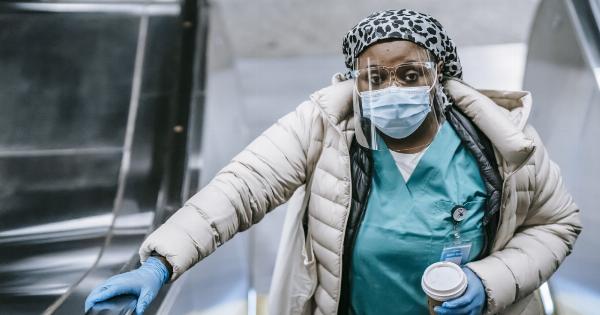Workplace safety is a critical concern for employees all around the world. Unfortunately, despite numerous regulations and safety protocols, accidents still occur, resulting in injuries and even fatalities.
The European Union (EU) is one region that continues to bear the grim reality of workplace accidents, with a staggering 5,000 workers losing their lives each year due to occupational hazards.
The Need for Stricter Regulations
The high fatality rate among EU workers calls for more stringent regulations across industries.
While the EU has worked towards ensuring safer work environments, the current statistics highlight the need for an increased focus on preventing accidents and creating a culture of safety.
The Many Faces of Occupational Hazards
Occupational hazards come in various forms, with some industries being more prone to accidents than others. Let’s take a closer look at the main causes of workplace accidents across the EU:.
1. Falling from Heights
Falls from heights are a leading cause of fatal accidents in the EU. These accidents typically occur at construction sites, where workers perform tasks at elevated positions without adequate safety measures.
The use of appropriate fall protection equipment and regular safety training can help prevent such incidents.
2. Machinery Accidents
Machinery accidents are another significant contributor to workplace fatalities. Whether it’s negligence or mechanical failure, inadequate maintenance and insufficient safety measures when working with heavy machinery can lead to tragic outcomes.
Regular inspections, strict adherence to safety guidelines, and comprehensive training can minimize the risk of machinery-related accidents.
3. Electrocutions
Electrocutions are a constant danger in many workplaces, especially those involving electrical equipment. Faulty wiring, improper grounding, or negligence when working with live wires are common causes of electrocution accidents.
Education, awareness, and strict adherence to safety procedures can significantly reduce the occurrence of these incidents.
4. Exposure to Harmful Substances
Workers exposed to harmful substances face numerous health risks. Exposure to asbestos, hazardous chemicals, and other toxic materials can lead to serious illnesses, including cancer and respiratory disorders.
Implementing proper handling procedures, providing personal protective equipment, and regularly assessing and monitoring working conditions are essential in reducing the harmful impact of these substances.
5. Road Accidents
For workers who spend a significant portion of their time on the road, such as truck drivers, delivery personnel, or company representatives, road accidents are a major concern.
Both commuting accidents and accidents while on duty pose risks to their safety. Strict adherence to traffic rules, regular vehicle maintenance, and defensive driving training can help prevent road accidents.
Working Towards a Safer Future
Reducing the number of workplace accidents and fatalities requires collective efforts from employers, employees, and regulatory bodies across the EU. Here are some key steps that can contribute to a safer future:.
1. Enhanced Safety Training
Safety training should be a mandatory requirement for all workers, regardless of their industry. Employers must prioritize providing comprehensive safety training programs that address the specific risks and hazards associated with each job role.
2. Stricter Safety Guidelines
Introducing more stringent safety guidelines across industries can help prevent accidents. Regular monitoring, inspections, and audits should be conducted to ensure compliance with these guidelines.
3. Emphasizing the Importance of Reporting
Employees should be encouraged to report any potential hazards or safety concerns promptly.
Creating a culture of open communication, where employees are confident in reporting incidents without fear of repercussions, is crucial in preventing future accidents.
4. Adequate Personal Protective Equipment (PPE)
Employers must provide proper personal protective equipment to workers based on the nature of their job. Regular assessments should be conducted to ensure the efficiency and effectiveness of the provided protective gear.
5. Regular Inspections and Maintenance
Regular inspections of machinery, equipment, and infrastructure are vital to identify and rectify potential hazards. Maintenance schedules should be followed strictly, and any reported maintenance issues should be promptly addressed.
6. Continuous Training and Education
Keeping employees updated on the latest safety protocols and industry best practices is essential.
Regular refresher courses and ongoing education ensure that employees are equipped with the knowledge and skills necessary to identify and mitigate potential risks.
7. Encouraging Employee Involvement
Creating opportunities for employees to actively participate in safety committees, share their suggestions, and collaborate with employers in identifying safety improvements fosters a sense of ownership and accountability towards workplace safety.
8. Raising Awareness
Raising awareness about workplace safety through campaigns, seminars, and other initiatives can help instill a safety-conscious mindset among workers.
Regular reminders and updates on safety procedures can significantly contribute to accident prevention.
9. Collaboration and Sharing Best Practices
Industries and organizations should collaborate and share best practices when it comes to workplace safety. Learning from successful safety strategies implemented by others can drive continuous improvement and significantly reduce accidents.
10. Strengthening Regulatory Enforcement
Regulatory bodies must strengthen their enforcement of safety regulations and impose stricter penalties for non-compliance.
Regular audits and inspections, along with punitive measures, act as deterrents and encourage employers to prioritize workplace safety.
Conclusion
The grim reality of 5,000 EU workers losing their lives in work-related accidents every year showcases the urgent need for improved workplace safety measures.
By implementing stricter regulations, enhancing safety training, promoting employee involvement, and fostering a culture of safety, we can strive towards a future where workers can perform their duties without risking their lives.




























